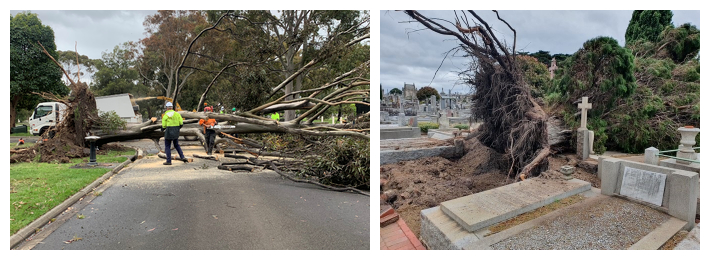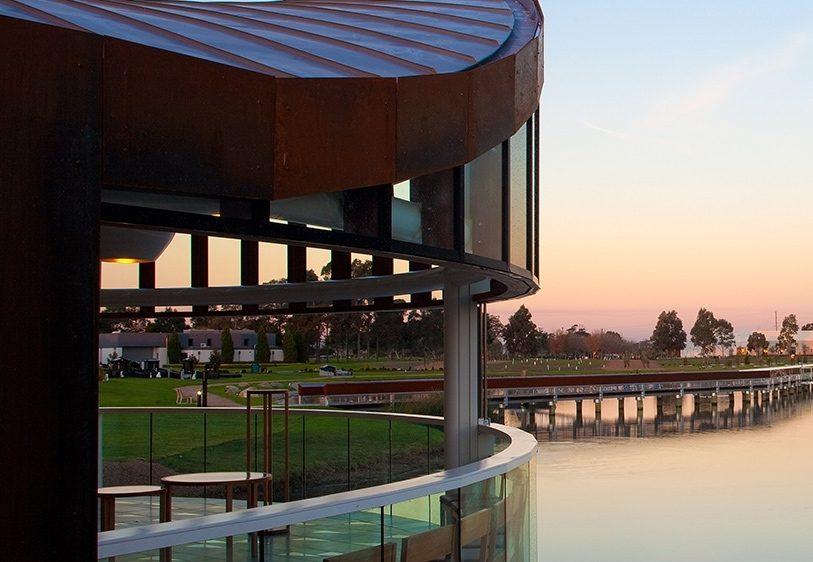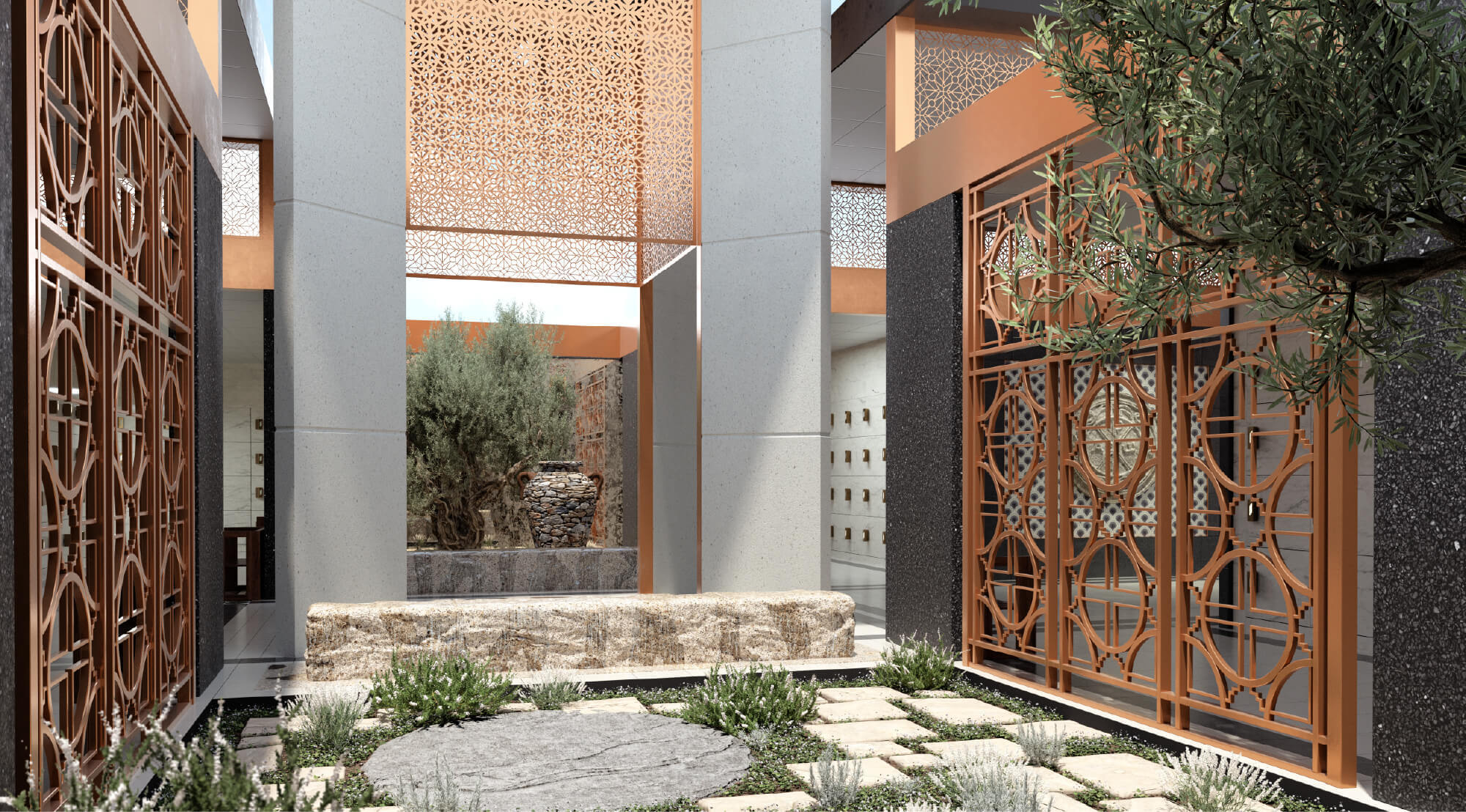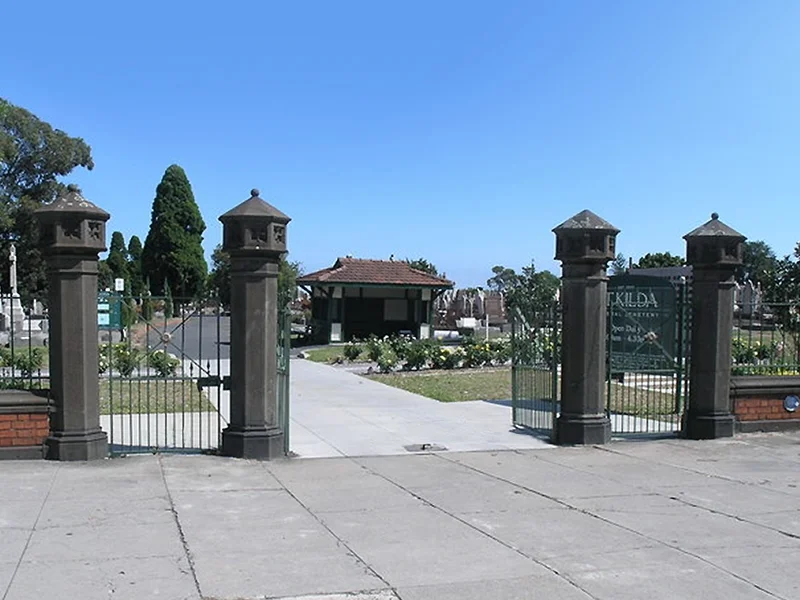The wettest season in 120 years

November 2021, the wettest month in a century is behind us, but it’s clear that December and January have had more rain to bring. As our teams work hard to keep our sites safe and well-presented in rain or shine, we thought we’d share an insight into what this season of extreme weather has been like for our teams and some tips on how to stay safe when coming on-site.
The past few months have delivered unexpectedly wild and wet weather across our state, with the mixture of extreme rainfall and heat bringing challenges for every devoted gardener in Australia. October 2021 recorded above average rainfall in every Melbourne suburb, November was labelled as ‘the wettest month in 122 years’ and more recently, we entered into the ‘wettest January on record’. The Bureau of Meteorology tells us we have entered La Niña - a pattern of weather across the Pacific that is likely to result in eastern and northern Australia facing wetter than average conditions all summer.
Across our sites, extreme weather has a big impact. With a large portion of our grounds exposed to natural elements, wind, rain, extreme heat and hail bring many potential challenges and hazards (and a whole lot of mud!). Of course, this impacts not only the workload and focus of our teams but also the experience of our visitors. For our community, who have had so many challenges through this difficult year in addition to the pain of loss, it has been an additional burden to have weeks of icy and wet visits through muddy ground, temporarily closed roads, as well as extreme wind and heat.

Teams clear fallen trees following damaging winds on 29 October 2021
A Focus on safety
For our team, the challenge has been felt. Over the last months, our outdoor teams have had a huge endeavour on their hands to ensure our grounds stay safe.
With numerous reports of fallen trees and damage across our sites, our teams on the ground continued to carry out an incredible joint effort to clear debris as efficiently as they could to restore our sites. Over the last period, our teams spent numerous hours on safety work and had to individually inspect hundreds of trees for damage or potential hazards.

‘Often, a tree can look fine to someone with an untrained eye,’ Anna-Marie Accadia, Operations Manager at SMCT told us. ‘But trees can often sustain internal structural damage that takes expert eyes to spot. If left, they can potentially collapse, or have branches fall unexpectedly days or weeks after a storm event. It’s not a risk we can take.’

The work continues
While clearing hazards will continue to be a priority during the wild weather period, our operational teams also continue to work tirelessly to repair damage, including water damage and leftover debris, doing their best to preserve the presentation of our sites.
‘Our visitors care deeply about our sites, and we do too,’ says Anna-Marie.
‘Our gardens are spaces we created with our own hands and that we nurture each day; they are trees we have seen grow over the years, roses we planted, lawns we feed. It breaks our heart to see our gardens, as well as the resting place of special loved ones, take a beating from the weather.
We can’t wait for days of calmer and more stable weather, but in the meantime, we are going to keep working hard to keep our sites as safe and as well-looked-after as possible for our community.’
Visiting safely
As the changing weather continues, we welcome the community to continue safely visiting our sites, but ask every member of our community to stay safe by considering the following:
- stay on sealed paths as much as possible when the ground is very muddy
- drive carefully in the rain, keeping to the speed limit displayed, and pull over if your visibility is impaired
- wear comfortable closed shoes or boots and avoid stepping on or over fallen branches
- avoid placing loose items on the resting place of a loved one that could be easily damaged or displaced by rain and wind
- stay hydrated and sun-smart in extreme heat
- in any extreme conditions, consider rescheduling your visit
We thank you for your patience while our teams continue to proactively anticipate and respond to extreme weather events.
We sincerely appreciate the consideration and patience displayed by our community during this time and look forward to welcoming you on-site at your next visit.
Sources:
Melbourne in October 2021 (bom.gov.au)
BOM declares La Niña as eastern Australia prepares for another sodden end to the week - ABC News





